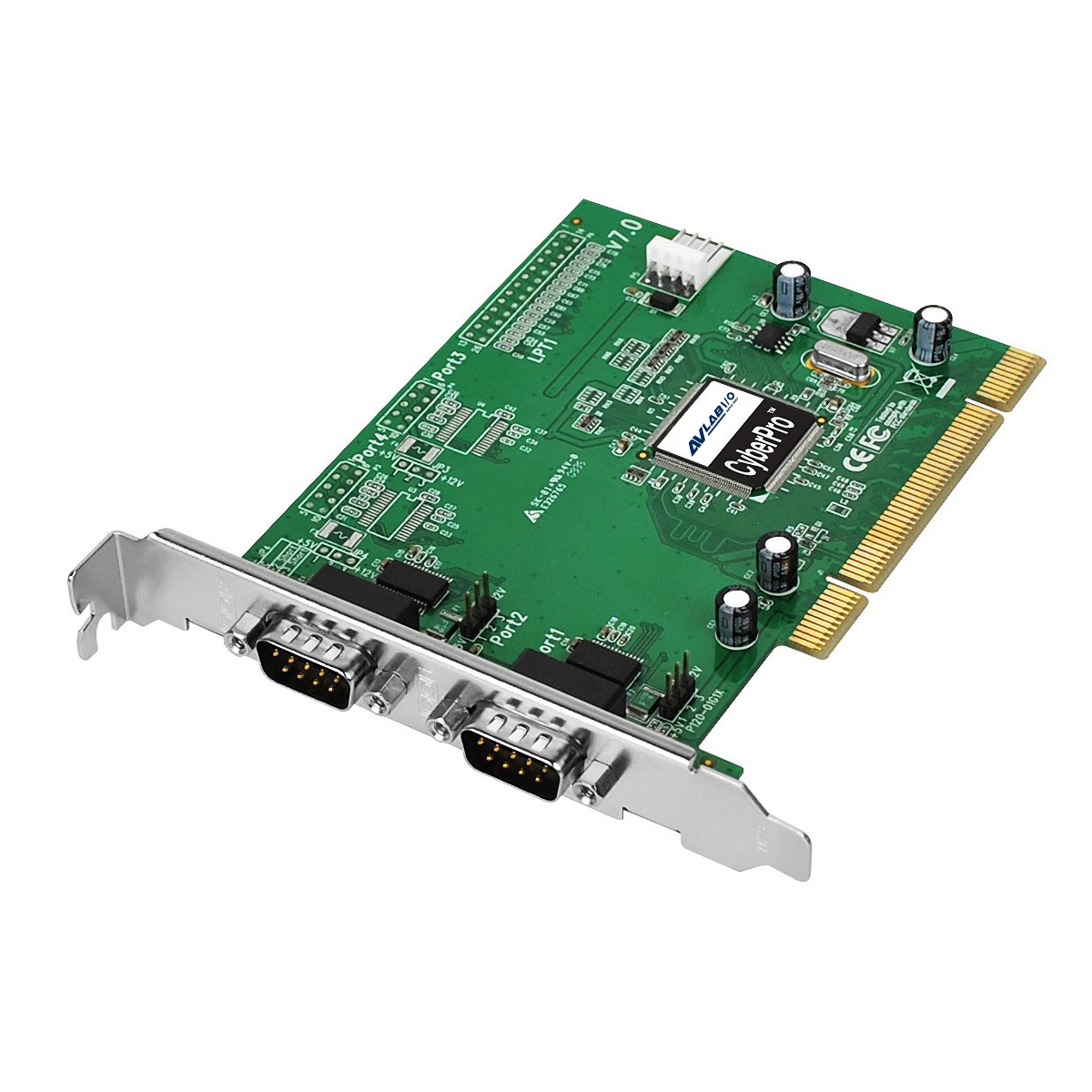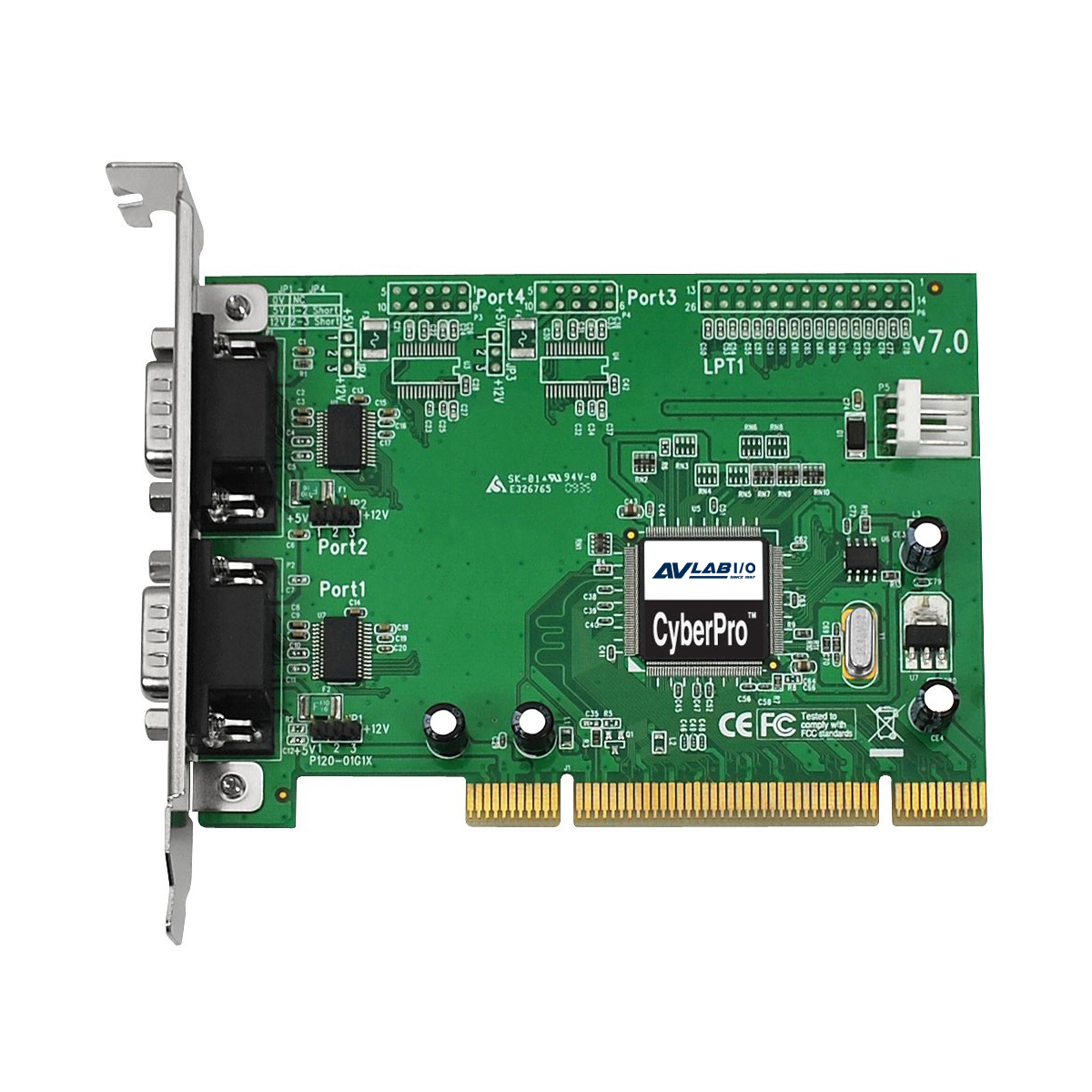- AVLAB-JJ10-1
- AVLAB Dual Port Serial PCI Card with POS system, DB9 RS-232, 921Kbps
■ Designed to add two 9-pin RS-232 serial ports to your PCI enabled desktop computer ■ Two high-speed 16950 UART serial ports support data transfer rates up to 920Kb/s ■ Built-in 128-byte FIFO buffers dramatically increase data transmit and receive speeds especially under Windows multitasking environment ■ Works as standard RS-232 serial ports to support serial devices including ISDN terminal adapters, PDAs, digital cameras and label printers ■ Can be configured with a 5V or 12V power output for devices that require power such as handheld scanners, table scanners, POS displays and many more
Highlights
EXPANSION
Designed to add two 9-pin RS-232 serial ports to your PCI enabled desktop computer
HIGH SPEED DATA
Two high-speed 16950 UART serial ports support data transfer rates up to 920Kb/s
128-BYTE FIFO BUFFERS
Built-in 128-byte FIFO buffers dramatically increase data transmit and receive speeds especially under Windows multitasking environment
WORKS AS A STANDARD RS-232 PORT TO SUPPORT SERIAL DEVICES
Works as standard RS-232 serial ports to support serial devices including ISDN terminal adapters, PDAs, digital cameras and label printers
CONFIGURABLE POWER OUTPUT
Can be configured with a 5V or 12V power output for devices that require power such as handheld scanners, table scanners, POS displays and many more
Specification
Chipset: Oxford OXuPCI952
Conforms to PCI v2.2 universal card standard. PCI-X and 64-bit compatible
Supports 3.3V operation with 5V tolerance
Built-in 128-byte FIFO buffers dramatically increase data transmit/receive speed, especially under Windows multitasking environment
Two high-speed 16950 UART RS-232 serial ports with data transfer rate up to 920Kb/s
IRQ sharing reduces IRQ conflicts
Enhanced bracket design to prevent bending
Supports PME (Power Management Event). Allows device to request a change in system power state (wake up system)
Ports: 2, 9-Pin, DB9, RS-232 Serial, Male
Product dimensions: 5" (W) x 4.72" (H) x 0.51" (D)
Product weight: 0.18 lbs (81.5 g)
Form factor: Full height
Environmental conditions
■ Operating temperature: 32 to 122 degrees F (0 to 50 degrees C)
■ Operating humidity: 20% to 80% RH
■ Storage temperature: -4 to 140 degrees F (-20 to 60 degrees C)
■ Storage humidity: 10% to 90% RH
Certifications/Standards: FCC, CE, RoHS
Warranty: Lifetime limited
Country of origin: China
FAQ
- How do I confirm that Windows detects my expansion card?
- To confirm that Windows detects your expansion card, complete the following: Press the Windows key+R, type devmgmt.msc, and press Enter. In Device Manager, under the appropriate heading, confirm that your expansion card is listed and that there isn't an exclamation mark next to it. For example, a RS-422/485 controller card would be under Ports (COM & LPT)
- How do I confirm that Windows detects my USB device?
- To confirm that Windows detects your USB device, complete the following: Press the Windows key+R, type devmgmt.msc, and press Enter. In Device Manager, under the appropriate heading, confirm that your expansion card is listed and that there isn't an exclamation mark next to it. For example, a USB device would be under Universal Serial Bus controllers.
- How can I make sure my serial port is working in Windows?
- To check whether or not an RS-232 serial port is working, perform an RS-232 loopback test by doing the following: If your serial port is not female, convert it by taking a female/female cable or gender changer and plugging it into the serial port. Take a metal paperclip or wire and cross pins 2 and 3. If you look closely at the female end, the pins should be numbered. Open a telnet session on the COM port number of the device that you are testing. Note: To open a telnet session on the COM port, you need a telnet client like PuTTY or Hyper Terminal. Windows XP comes with Hyper Terminal. When the session is open, anything you type into it you should see. The loopback test fails when you cannot see what you are typing. If the loopback test fails, make sure that the serial cable or gender changer that you are using works and that the adapter is in the correct port.





